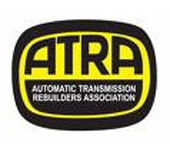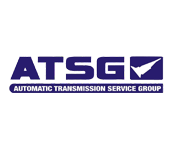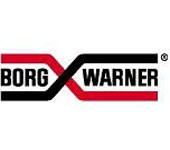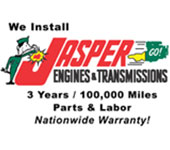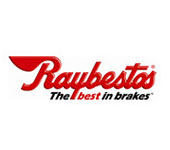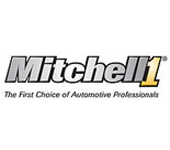817-446-7295 or 682-321-7117 | 2921 S Cooper St #101 Arlington, TX 76015
AUTONET TV
Archive for April 2022See the Light (Automatic High Beam Dimmers)Posted April 17, 2022 11:46 AMIt's happened to all of us. We're driving down a highway at night and over a crest appears a car with its high beams blazing. You are momentarily blinded, hoping the other driver will switch them to their low beam setting and restore your vision. Not only do we not appreciate being blinded, face it; we don’t want to be that other driver, either. You know, the one who forgets to turn down their high beams. Why do we want high beams in the first place? They can improve safety when used correctly, giving drivers more reaction time since they can see farther down the road. But research has found many drivers either don't use them or, when they do, they frequently forget to switch to low beams. Enter the automatic high-beam dimmer. The quest for the perfect one began back in the 1950s, General Motors invented something it called the "Autronic Eye." It was a phototube which sat on the dashboard and turned down your beams when it saw other headlights. While touted as being the biggest advance in night driving safety in 30 years, it didn't work all that well. But as technology got more advanced, systems improved. Today's automatic high beam dimmers usually have a camera in the rear view mirror (pointing forward). When the camera sees lights, software in the system's computer attempts to determine the source of the light, whether it is an oncoming vehicle, taillights, ambient city lights, street lights or the reflection off of a street sign. It then adjusts the headlights to operate high beams if appropriate or a less-blinding mode if they’re not. Some automakers are striving to make their headlight systems smarter and safer by developing lamps that can avoid blinding oncoming drivers by means other than simply dimming them. One idea? Splitting the beams so they will block just the portion that shines into the eyes of oncoming drivers. It's a long way from the Autronic Eye. Westmoreland Transmissions What's in a Number? (What Tire Numbers Mean)Posted April 10, 2022 11:44 AMYou've probably never paid much attention to the writing on the sides of your tires, but they contain a wealth of information. There's a long combination of letters and numbers that can tell you a whole lot about what tires your vehicle was designed to be riding on. Let's check out this example found on an SUV: P245/70R17 108T. The first letter, P, means it's intended for passenger vehicles. If there's no letter, it means it's a metric tire. If there's an LT at the beginning or end that means a tire designed for light trucks. Moving on to our example, the 245 shows how wide the tire is in millimeters from sidewall to sidewall. The number that follows in our example, 70, means the height of the tire is 70% of its width. The letter after that in our example, R, describes the type of tire (on this vehicle, radial). Following that is the diameter in inches, in our SUV example, 17 inches. How much load the tires' sidewalls are designed to take is what that next number is all about (108 in our example). The higher the load index, the more weight the sidewalls can take. And the last letter is the speed rating of the tire, in our example, T. The further along in the alphabet that letter is, the higher its speed rating. So now you know what those letters and numbers mean. But why are they important? When you are getting ready to replace those tires, those numbers are telling you what the original equipment was when your vehicle was new. Sticking with the same rated tires is always a good idea. If you don't know what you're doing, trying different sized tires and wheels can cause real issues when it comes to performance and safety, considering all the computerized systems now found on vehicles. When in doubt, consult your service advisor when it comes to buying new tires. He or she knows what those tire numbers and letters mean… and a whole lot more. Westmoreland Transmissions A Not-So-Straight Story (Vehicle Pulls to One Side)Posted April 3, 2022 10:03 AMA vehicle should travel straight down a straight road with the steering wheel centered. But time and travel can take their toll and soon you may find your vehicle pulling to the left or right. Those are not good signs and should be taken care of fairly quickly. One thing that you should note is when this is happening: if it is all the time, only when you brake, only when you accelerate. If you describe these symptoms to the service adviser or technician, it may help them pinpoint the cause more quickly. Many things can cause a vehicle to pull to one side, one of which is that it's out of alignment. If so, you could be doing damage to other components of your vehicle if you keep driving with it this way. If your tires show signs of uneven wear on the treads or if your wheels squealing, that is another clue. Improperly inflated tires can also cause your vehicle to pull in one direction. Your service facility can check to see if your tires have the pressure recommended by your vehicle's manufacturer. When steering linkage wears out or a wheel bearing goes bad, both of those can cause a vehicle not to track straight. When components age and loosen up, they can present a safety hazard and premature tire wearing. Maybe you notice the pulling only when you are braking. That points to a failure of your braking system, perhaps a sticky brake caliper. When your vehicle was brand new, it went straight unless you guided it on a different path. It's best to have it checked out if it is showing some of these symptoms. It could save you money in the long run and you'll be driving a safer, better performing vehicle. That's what they mean by steering you right! Westmoreland Transmissions | ||
SearchArchiveApril 2018 (16)May 2018 (5) June 2018 (4) July 2018 (5) August 2018 (4) September 2018 (5) October 2018 (4) November 2018 (4) December 2018 (5) January 2019 (5) February 2019 (4) March 2019 (5) April 2019 (4) May 2019 (4) June 2019 (5) July 2019 (4) August 2019 (4) September 2019 (5) October 2019 (4) November 2019 (4) December 2019 (5) January 2020 (5) February 2020 (4) March 2020 (5) April 2020 (4) May 2020 (5) June 2020 (4) July 2020 (4) August 2020 (5) September 2020 (4) October 2020 (4) November 2020 (5) December 2020 (4) January 2021 (6) February 2021 (4) March 2021 (4) April 2021 (4) May 2021 (5) June 2021 (4) July 2021 (4) August 2021 (5) September 2021 (4) October 2021 (5) November 2021 (4) December 2021 (4) January 2022 (6) February 2022 (4) March 2022 (4) April 2022 (4) May 2022 (5) June 2022 (4) July 2022 (5) August 2022 (4) September 2022 (4) October 2022 (5) November 2022 (4) December 2022 (4) January 2023 (5) February 2023 (4) March 2023 (4) April 2023 (5) May 2023 (4) June 2023 (4) July 2023 (5) August 2023 (4) September 2023 (4) October 2023 (5) November 2023 (4) December 2023 (4) January 2024 (5) February 2024 (4) March 2024 (5) April 2024 (4) May 2024 (4) June 2024 (5) July 2024 (4) August 2024 (4) September 2024 (5) October 2024 (4) November 2024 (4) December 2024 (5) January 2025 (4) February 2025 (4) March 2025 (5) April 2025 (4) May 2025 (4) June 2025 (5) July 2025 (1) | CategoriesWhat Customers Should Know (46)Battery Replacement (1)Steering (7)Maintenance (8)Fuel Economy (4)Keys to a long lasting vehicle (2)Check Engine Light (2)Air Conditioning (9)Battery (10)Tires and Wheels (3)Auto Safety (4)Transmission (3)Alternator (2)Fuel Saving Tip: Slow Down (2)Shocks & Struts (3)Fluids (2)Automotive News (1)Brakes (12)Older Vehicles (1)Cooling System (4)Service Intervals (1)Drive Train (2)Oil Change (5)Service Standards (1)Windshield Wipers (2)Headlamps (2)Winter Tires (1)Exhaust (5)Customer Detective Work (1)Fuel System (1)Tires (7)Alignment (4)Tire Rotation and Balancing (2)Transfer Case Service (1)Suspension (1)Winter Prep (2)PCV Valve (1)Safety (2)TPMS (1)Inspection (2)Timing Belt (2)Shocks and Struts (2)Brake Service (2)Spark Plugs (1) | |
coupons
HOLIDAY SPECIAL
4L60E With Torque Converter
view coupon
Carry Out - Normal Price $1,600
Carry Out ? Holiday Price $1,400
Testimonials
Eric Nicks, 05/21/2025
Bob was a very nice man and definitely knowledgeable about rebuilding transmissions. He rebuilt my f250 7.3 with 275K miles on it . Brought it in a two days later truck was done running again like new. He told me to drive it like you stole it and come back in another 300k miles. It’s been over two years and 100k miles and transmission runs like new. Definitely recommend..The guy working in the shop was a very nice guy also. Keep up the great customer service! 😃







